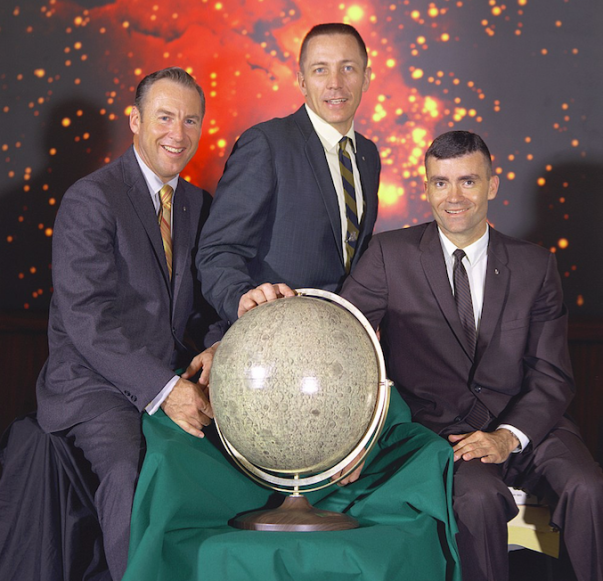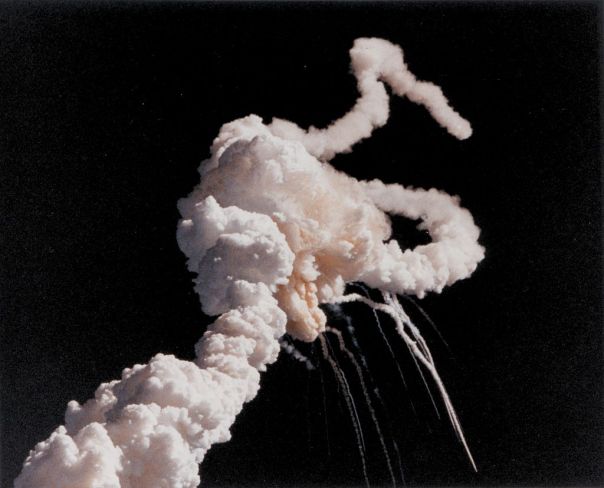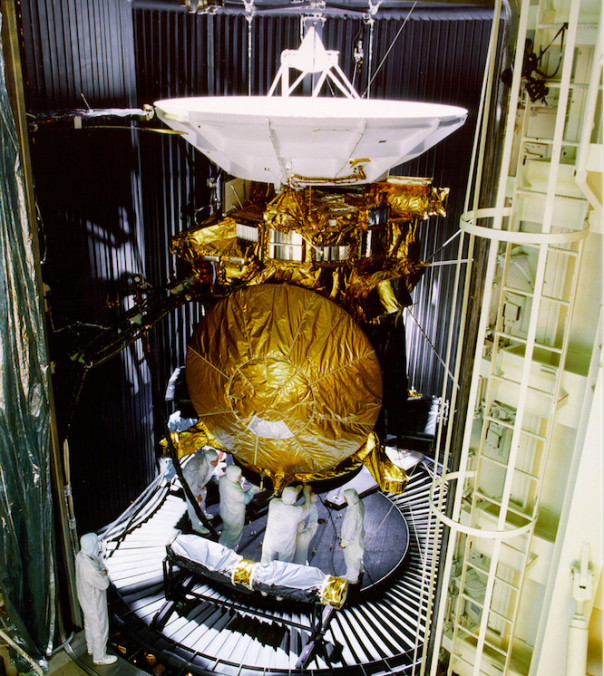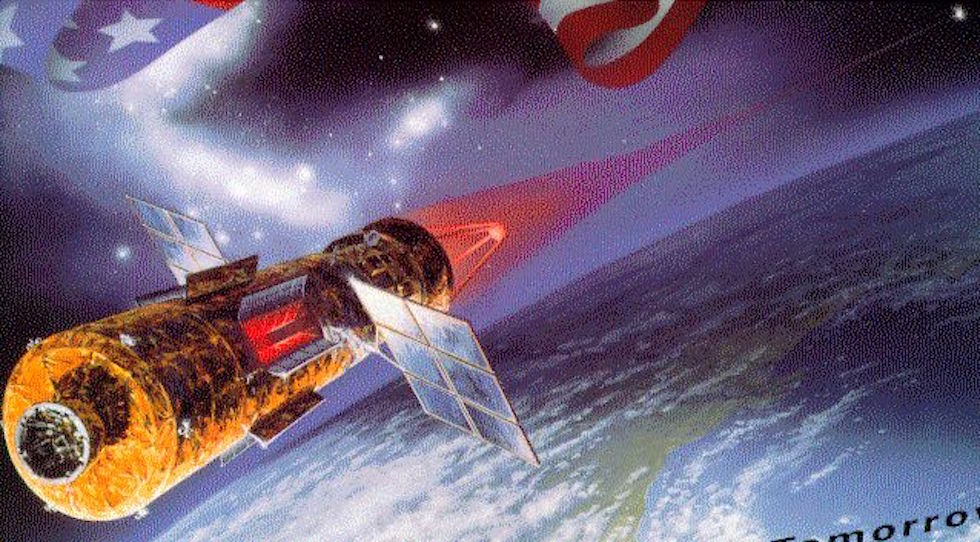Apollo 13 had plutonium on board. Challenger’s next flight would have. Now Trump wants to fire plutonium-powered spacecraft to Mars. What could possibly go wrong?
By Linda Pentz Gunter
President Trump has announced that he wants the National Aeronautics and Space Administration (NASA) to “lead an innovative space exploration program to send American astronauts back to the moon, and eventually Mars.” But the risks such ventures would entail have scarcely been touched upon.
For those of us who watched Ron Howard’s nail-biter of a motion picture, Apollo 13, and for others who remember the real-life drama as it unfolded in April 1970, collective breaths were held that the three-man crew would return safely to Earth. They did.
What hardly anyone remembers now — and certainly few knew at the time — was that the greater catastrophe averted was not just the potential loss of three lives, tragic though that would have been. There was a lethal cargo on board that, if the craft had crashed or broken up, might have cost the lives of thousands and affected generations to come.
It is a piece of history so rarely told that NASA has continued to take the same risk over and over again, as well as before Apollo 13. And that risk is to send rockets into space carrying the deadliest substance ever created by humans: plutonium.
Now, with the race on to send people to Mars, NASA is at it again. Small fission reactors would be used to generate electricity on Mars to power essential projects in the dark. But first, such a reactor has to get to Mars without incident or major accident. And the spacecraft carrying it would also be nuclear-powered, adding monumentally to the already enormous risk.
As physicist Michio Kaku points out, “Let’s be real. One percent of the time, rockets fail, they blow up, and people die.” With plutonium on board, the only acceptable accident risk has to be 0 percent.
When Apollo 13 mission astronaut John Swigert told NASA Mission Control “Houston, we’ve had a problem,” it only touched on the most immediate crisis: the damaging of the craft after the explosion of an oxygen tank that forced the crew to abort the planned moon landing.

The Apollo 13 crew from left to right: Commander, James A. Lovell Jr., Command Module pilot, John L. Swigert Jr.and Lunar Module pilot, Fred W. Haise Jr.(NASA)
However, what few knew at the time — and what was entirely omitted from Howard’s 1995 film — was the even bigger crisis of what to do about the SNAP-27 Radioisotope Thermoelectric Generator (RTG) on board. The RTG was carrying plutonium-238. It was supposed to have been left on the moon to power experiments. Now that no moon landing was to occur, what would become of the RTG, especially if Apollo 13 ended up crashing back to Earth in a fireball? Such an outcome could disperse the plutonium as dust, which, if inhaled, would be deadly.
One (and possibly the only) journalist who has been consistently on the “nukes in space” beat for more than 30 years is Karl Grossman. (Grossman is a professor of journalism and also a board member of Beyond Nuclear.) When the Apollo 13 movie came out, he picked up the phone and called the film’s production company, Imagine Entertainment, to ask why they had not included the higher drama of the plutonium problem. “It was surprising to see Hollywood not utilizing an Armageddon theme,” he said. He was told it was omitted for “artistic” reasons.”But NASA personnel had served as advisors for the film. Maybe they had preferred the drama to focus on the life-threatening jeopardy of the three astronauts rather than the danger to life on Earth posed by falling plutonium.
Grossman was already well aware of the Armageddon potential of NASA missions by the time he called Howard’s production company. In 1985, he had learned that two space shuttle missions planned for 1986 would carry plutonium-powered probes to be lofted into space to orbit the Sun and Jupiter. As it turned out, the ill-fated Challenger was one of the shuttles scheduled for the May 1986 plutonium mission, in what would have been its second flight that year.
The official NASA and Department of Energy (DOE) documents Grossman eventually obtained using the Freedom of Information Act, “insisted that a catastrophic shuttle accident was a 1-in-100,000 chance,” he said.
But on January 28, 1986, Challenger exploded. (Shortly thereafter, NASA changed the odds of a catastrophic shuttle accident to 1-in-76.) Grossman called The Nation and asked if they knew that Challenger’s next mission would have carried plutonium. The magazine invited Grossman to write an editorial — “The Lethal Shuttle” — which ran on the magazine’s front page.

The explosion of the Challenger space shuttle, shortly after launch, January 28, 1986. (NASA)
After The Nation editorial, Grossman was invited over to the offices of “60 Minutes.” He duly appeared with armfuls of documents and alarming “what ifs” but “60 Minutes” never picked up the story.
Grossman persisted, though. In 1997, he penned a book, The Wrong Stuff, which detailed NASA’s blunders with plutonium-fueled missions and its unrealistic calculations about the probability of a major accident.
There had been problems before Challenger. In 1964, an aborted mission carrying an RTG had resulted in a reentry burn-up over Madagascar. Plutonium was found in trace amounts in the area months later. Although the event was downplayed, it had serious consequences, as Grossman found in a report he cited in The Wrong Stuff. The plutonium had spread all over the world.
Similarly, in 1968, a weather satellite was aborted soon after takeoff from Vandenberg Air Force Base. The plutonium from its RTG plunged into 300 feet of water off the California coast. Fortunately, in this instance, it was retrieved. At the time, all satellites were powered by RTGs. But in the wake of these disasters, NASA had already begun to push to develop solar photovoltaic (PV) power for satellites. Today, all satellites are powered by solar PV, as is the International Space Station.
The Russians also had problems. In 1977, their Kosmos 954 reconnaissance satellite incurred a malfunction that prevented safe separation of its onboard nuclear reactor. When the satellite reentered the Earth’s atmosphere the following year, it scattered radioactive debris over northern Canada, prompting an extensive “cleanup” operation known as Operation Morning Light.
Apollo 13 jettisoned its 3.9 kg of plutonium over the South Pacific, already the setting for scores of atomic weapons tests by the US and France. Contained in a graphite fuel cask, it supposedly came to rest in the deep Tonga Trench. No one will ever bother to retrieve it, even though it is now technically feasible, because of the enormous cost. Whether it has leaked (likely) and how it has affected marine life will now never be known.
Although seemingly alone on the issue as a journalist, Grossman is not without other allies among activists. Bruce Gagnon’s Maine-based Global Network Against Weapons and Nuclear Power in Space has been campaigning on the issue since 1992. The topic was also covered by Helen Caldicott and Craig Eisendrath in their 2007 book, War in Heaven.
That same year, the Cassini space probe was launched. It carried 72.3 pounds of plutonium fuel, used to generate electricity, not propulsion — 745 watts of it to run the probe’s instruments. As Grossman pointed out in his documentary — Nukes in Space: The Nuclearization and Weaponization of the Heavens. Cassini “was launched on a Titan IV rocket despite several Titan IV rockets having blown up on launch.”

The Cassini probe undergoes testing, pre-launch. (NASA)
In 1999, because “Cassini didn’t have the propulsion power to get directly from Earth to Saturn…. NASA had it hurtle back to Earth in a ‘slingshot maneuver’ or ‘flyby’ — to use Earth’s gravity to increase its velocity,” wrote Grossman in one of many articles on the topic. A catastrophic failure of that operation could have seen Cassini crash to Earth, dispersing its deadly plutonium load. According to NASA’s Final Environmental Impact Statement for the Cassini Mission, Section 4-5, the “approximately 7 to 8 billion world population at the time … could receive 99 percent or more of the radiation exposure.” And yet, the agency proceeded to take that chance.
The world had once again dodged a radioactive bullet. In September 2017, having completed its mission, Cassini was deliberately crashed into Saturn, contaminating that planet with plutonium. While less controversial than lethally dumping it on Earth, the event raises at least moral, if not scientific questions about humankind’s willingness to pollute other planets with abandon after already doing so to our current home.
A November 2016 article in Roll Call suggested that while Trump has said little publicly about the militarization of space, behind-the-scenes space satellite warfare is very much on the agenda with serious money set aside to develop “weapons that can be deployed in space.”
A war in space might not involve nuclear weapons — for now. But warring satellites could knock out nuclear weapons early warning systems and set other potential disasters in motion. These cataclysmic risks play strongly into the arguments — enshrined in the recent UN nuclear weapons ban — that we should be disarming on Planet Earth, not arming in space.
(A version of this article first appeared in Truthout.)
 Beyond Nuclear International
Beyond Nuclear International
Pingback: 50 lat po Marcu 1968: Jak to z Żydami było i jest, u nas i wszędzie « Grypa666's Blog
Pingback: Has the world forgotten the catastrophic danger if a plutonium-powered space rocket crashed to Earth « nuclear-news
Pingback: The forgotten risk of a catastrophic crash of a plutonium-fuelled space rocket « Antinuclear